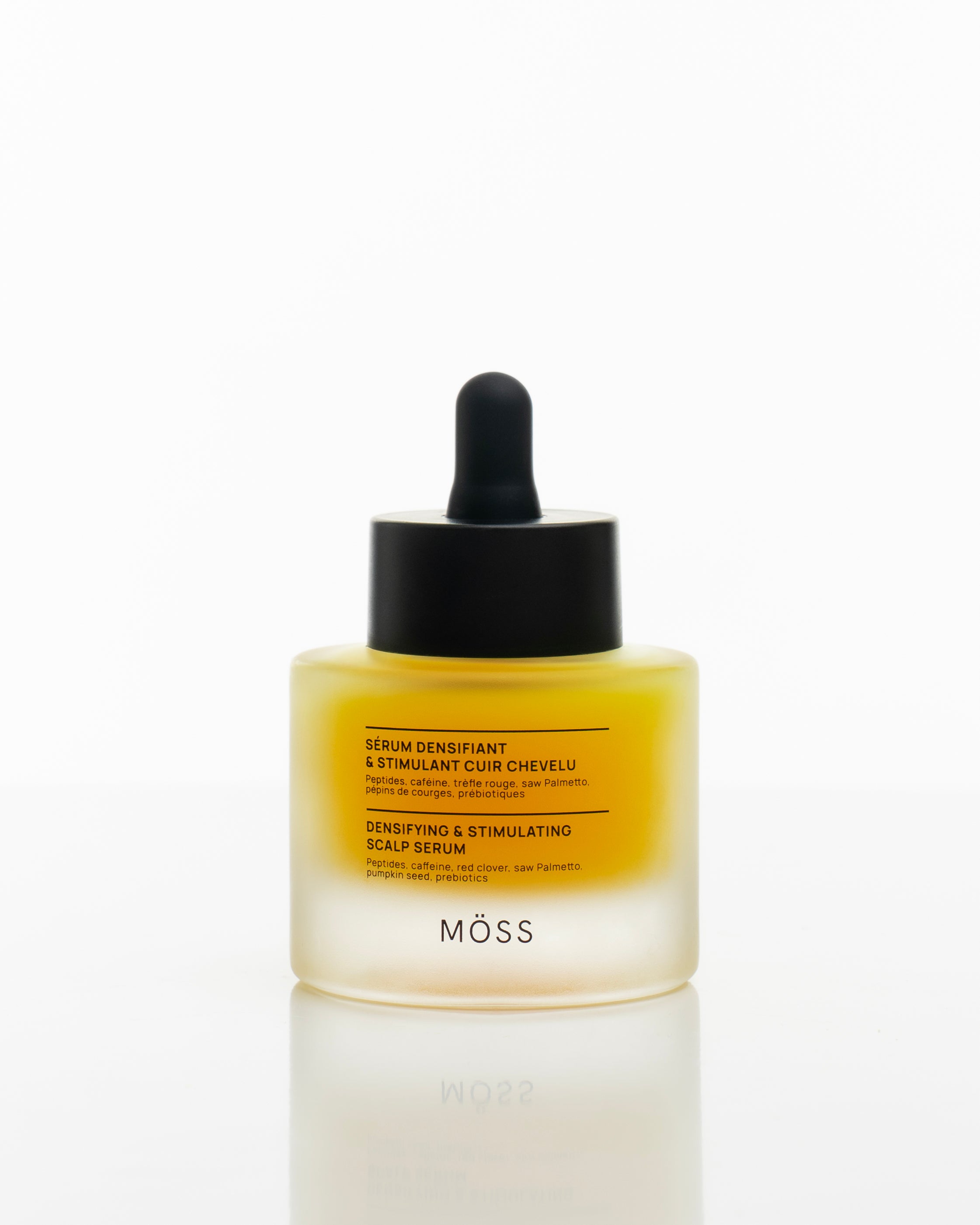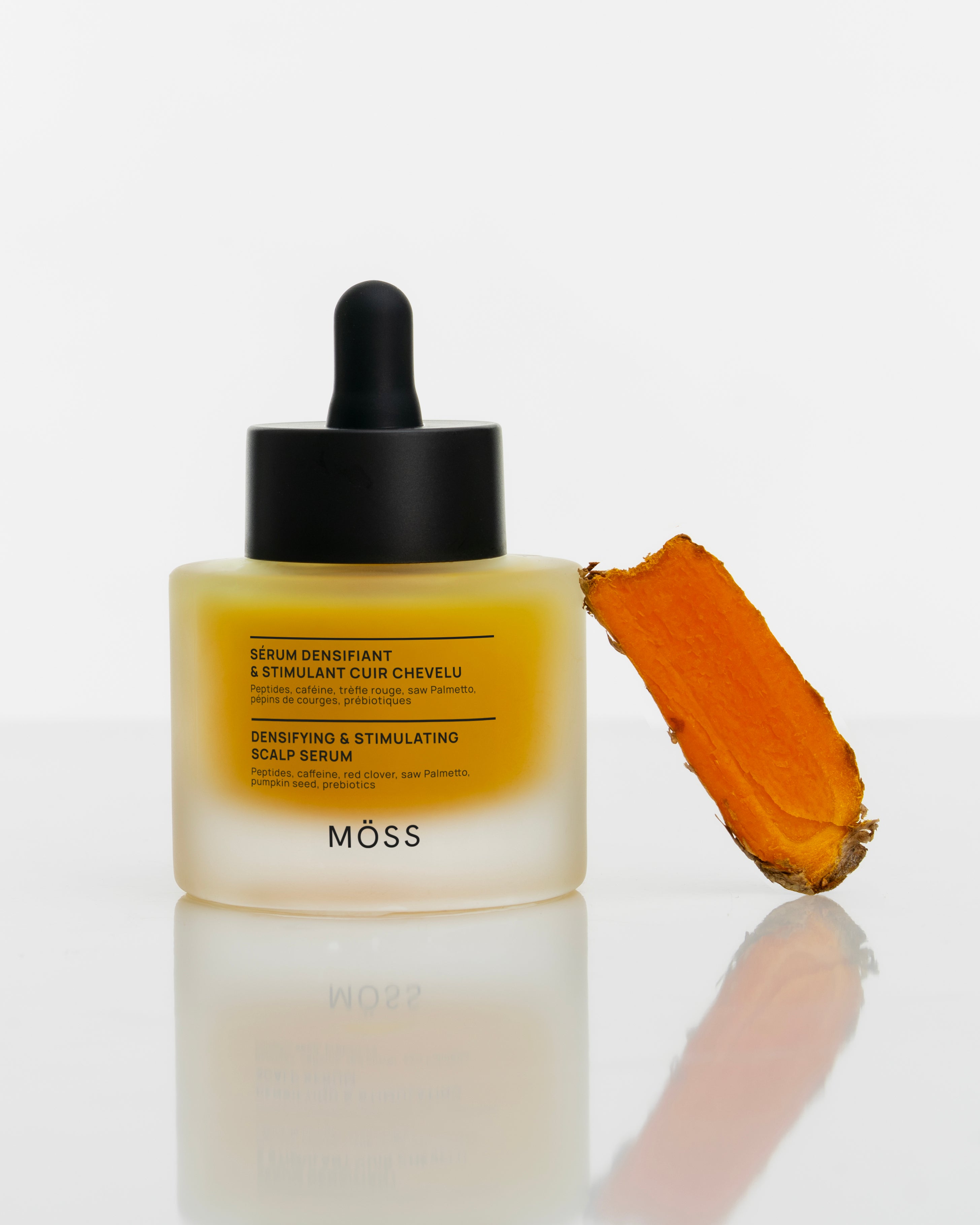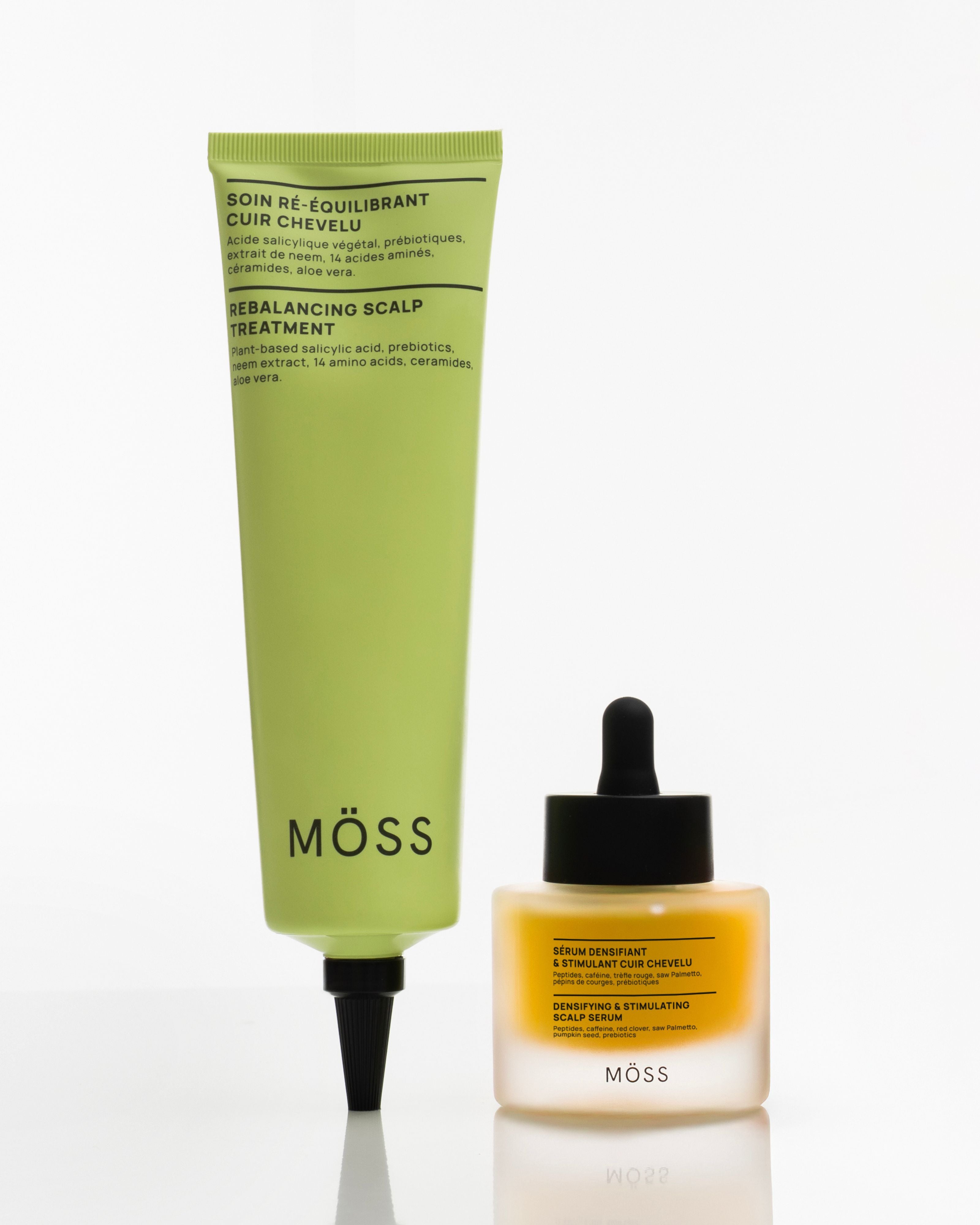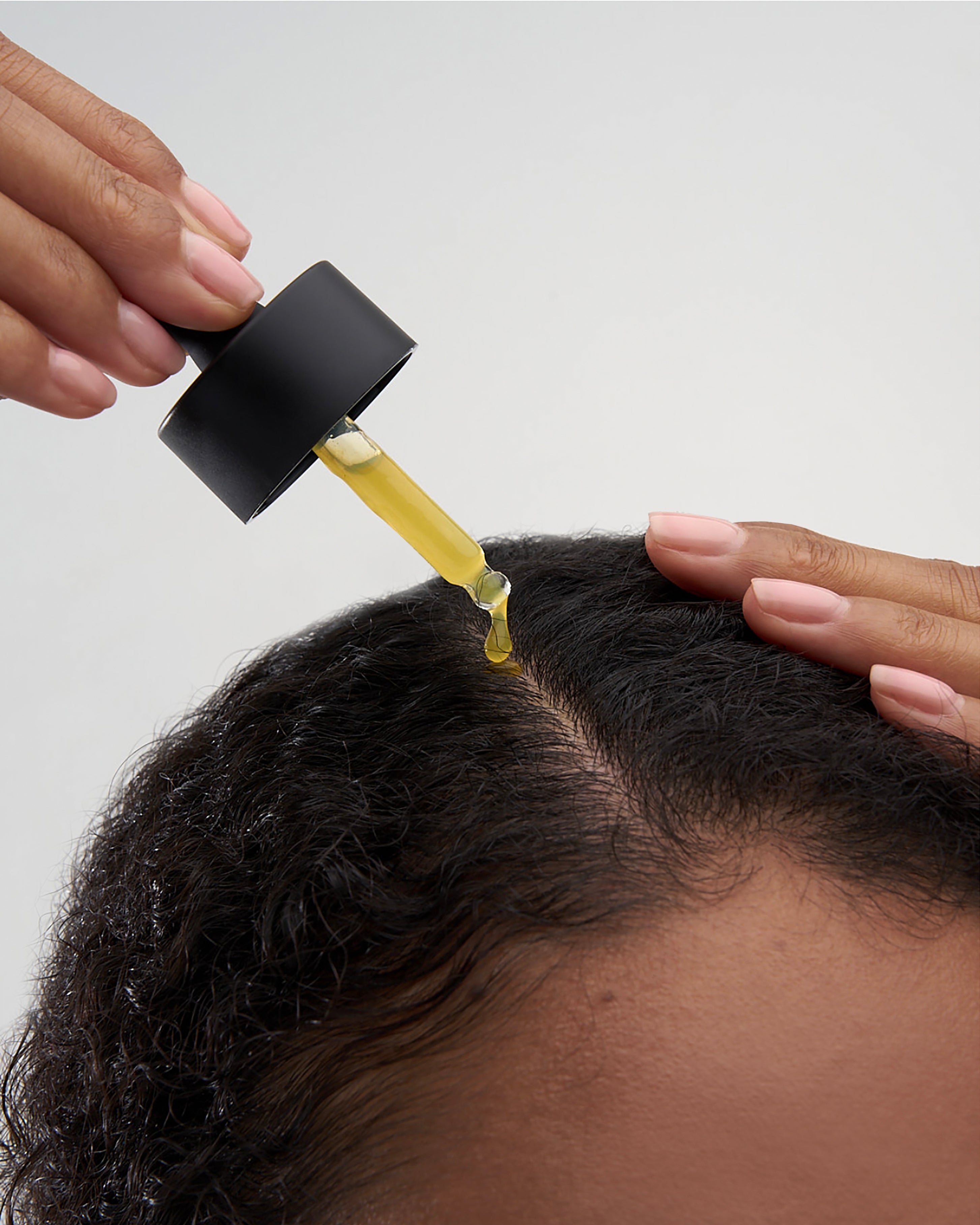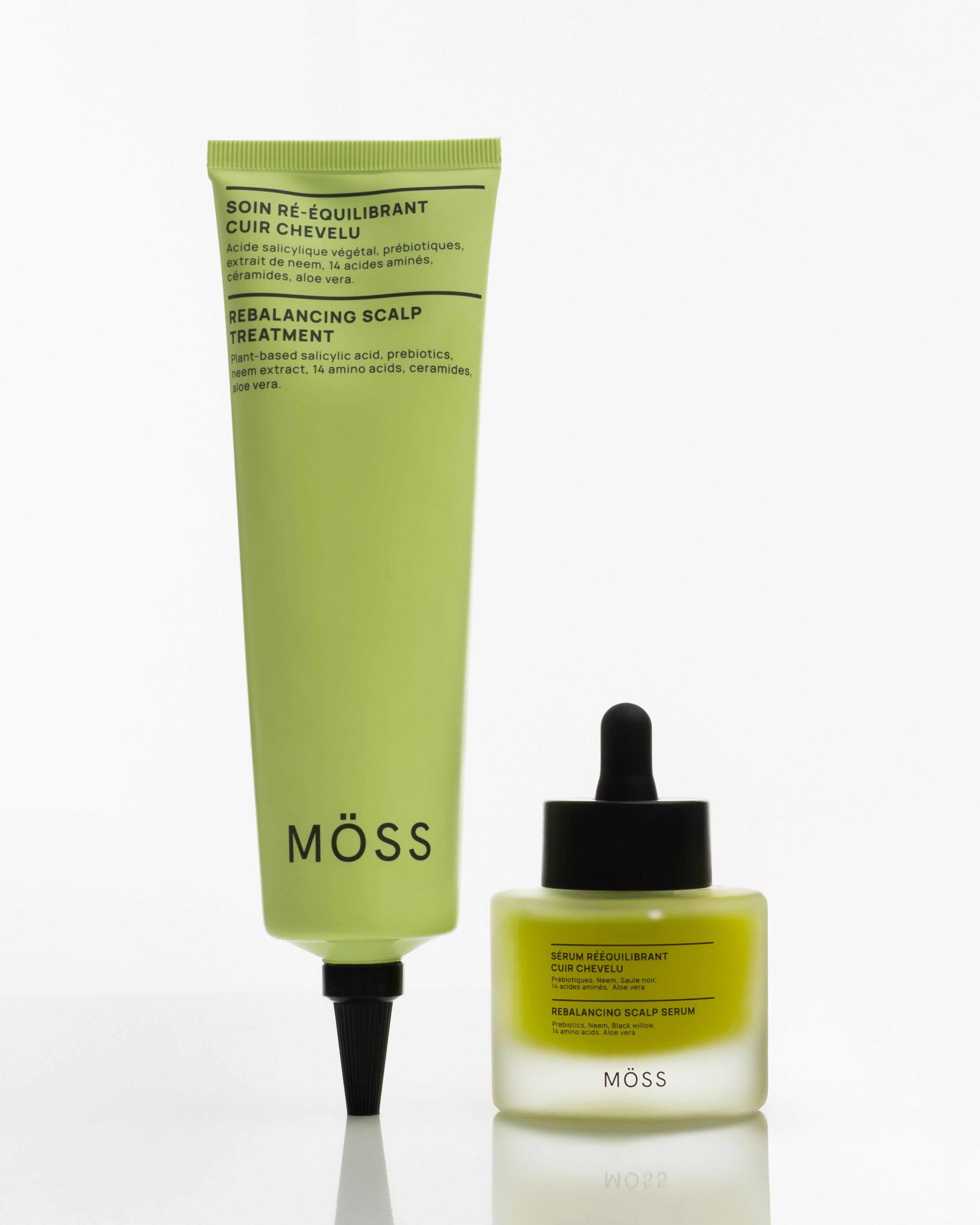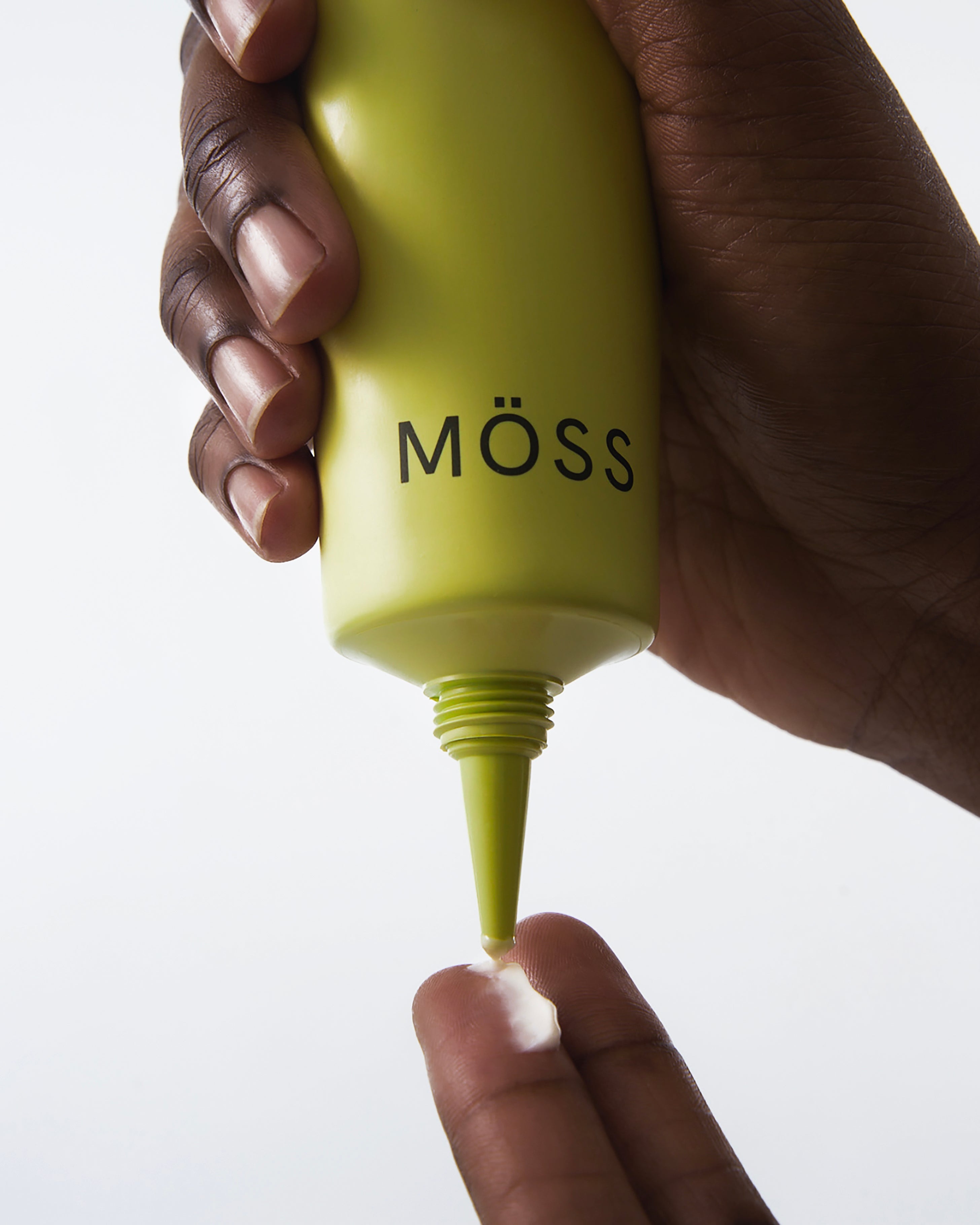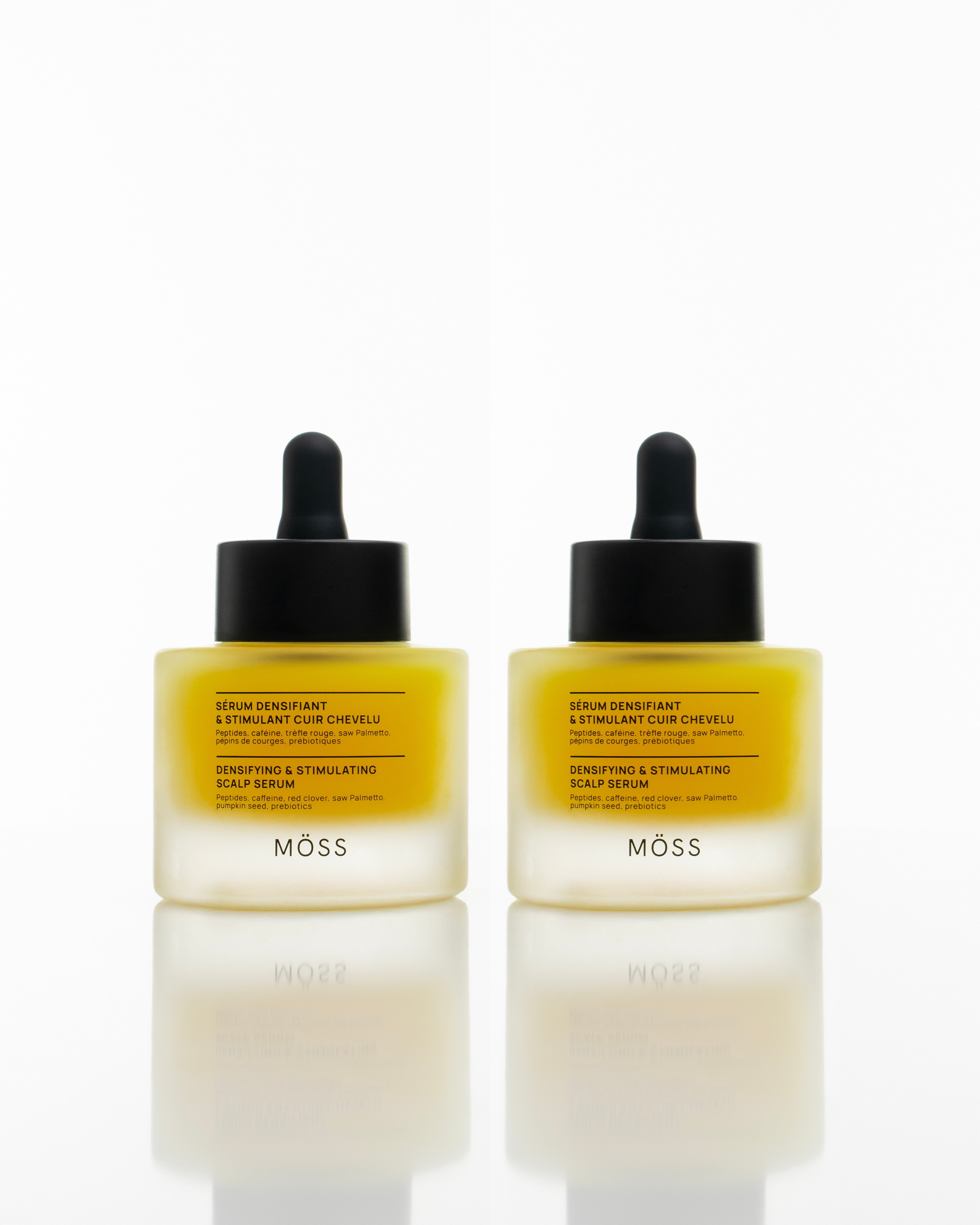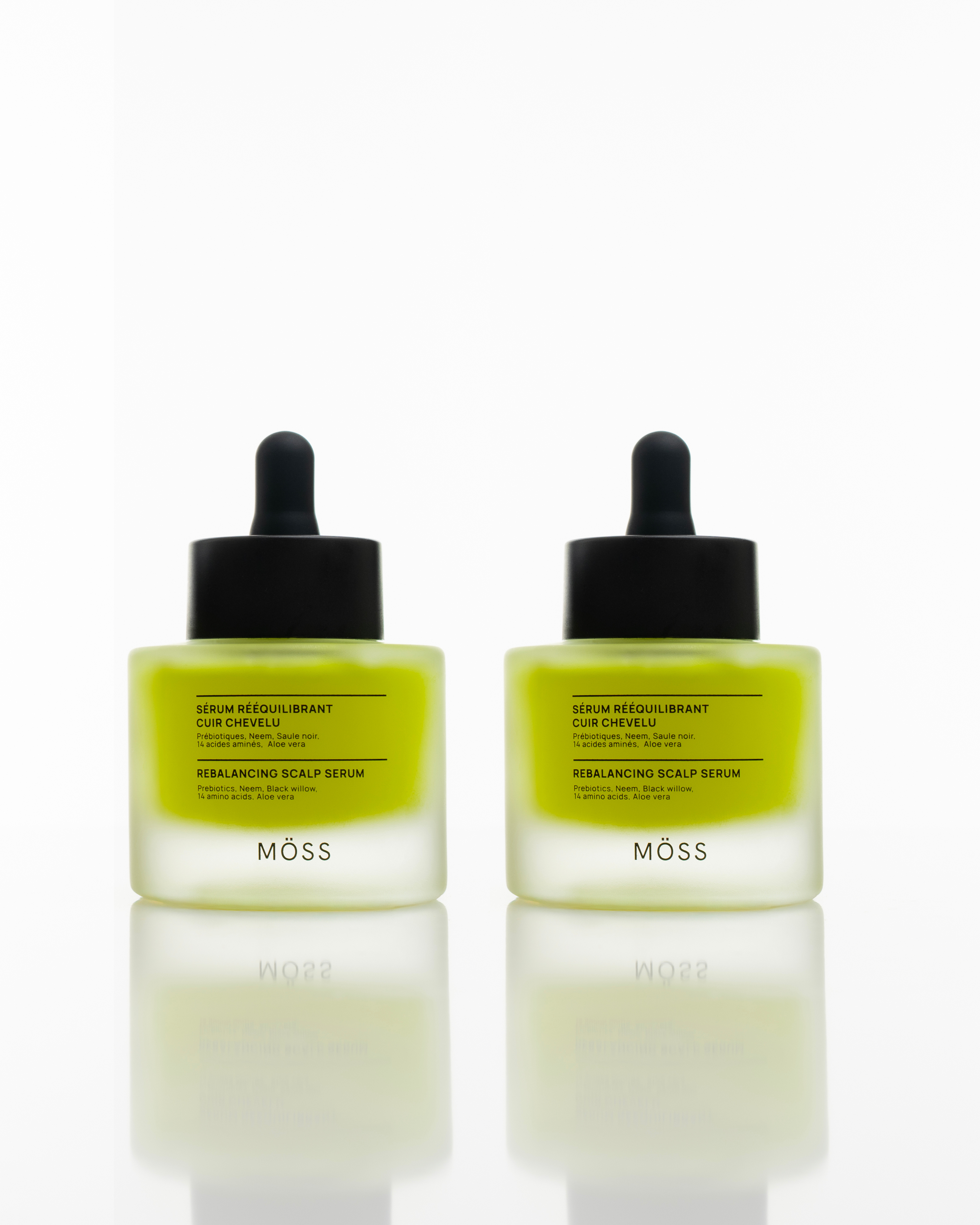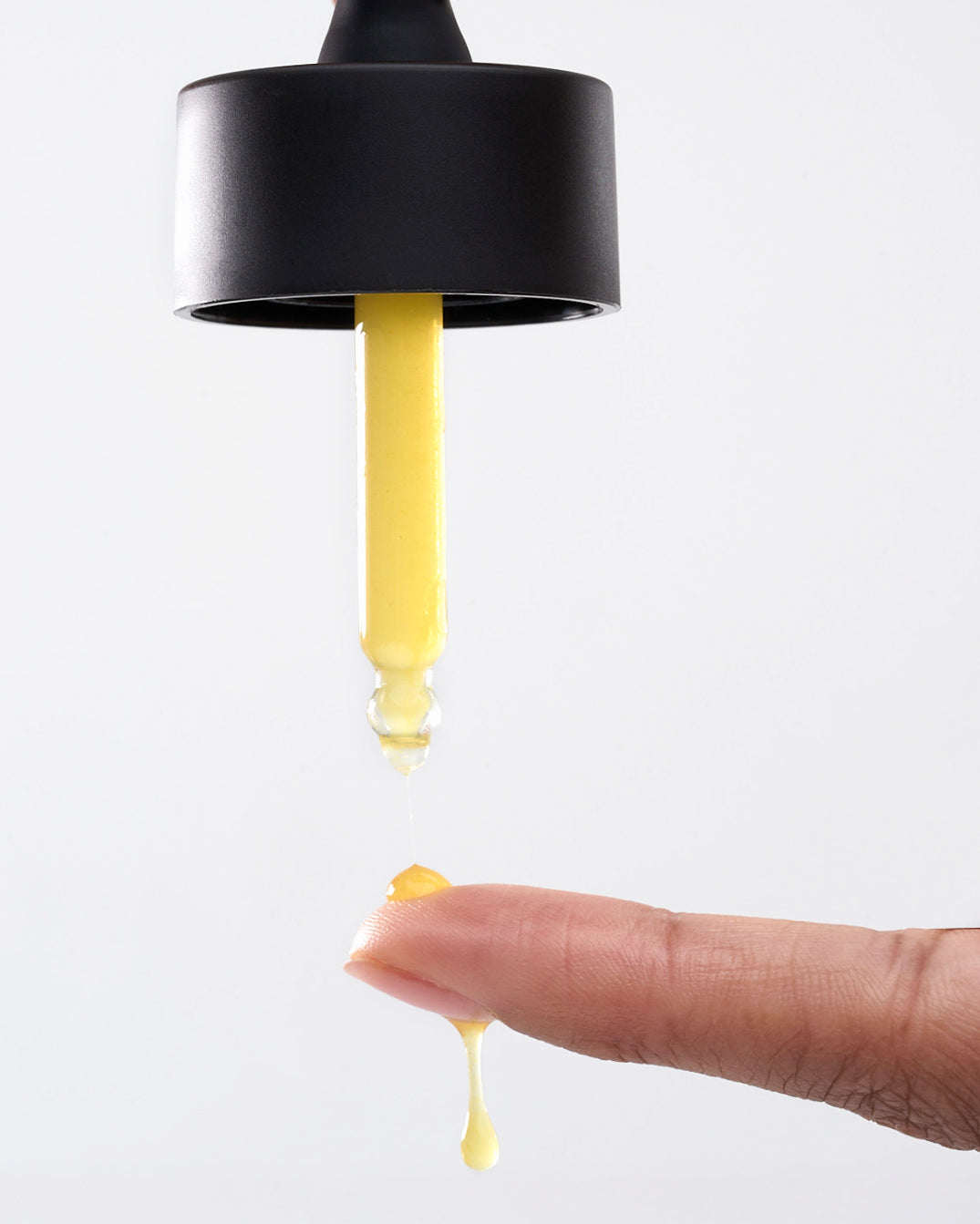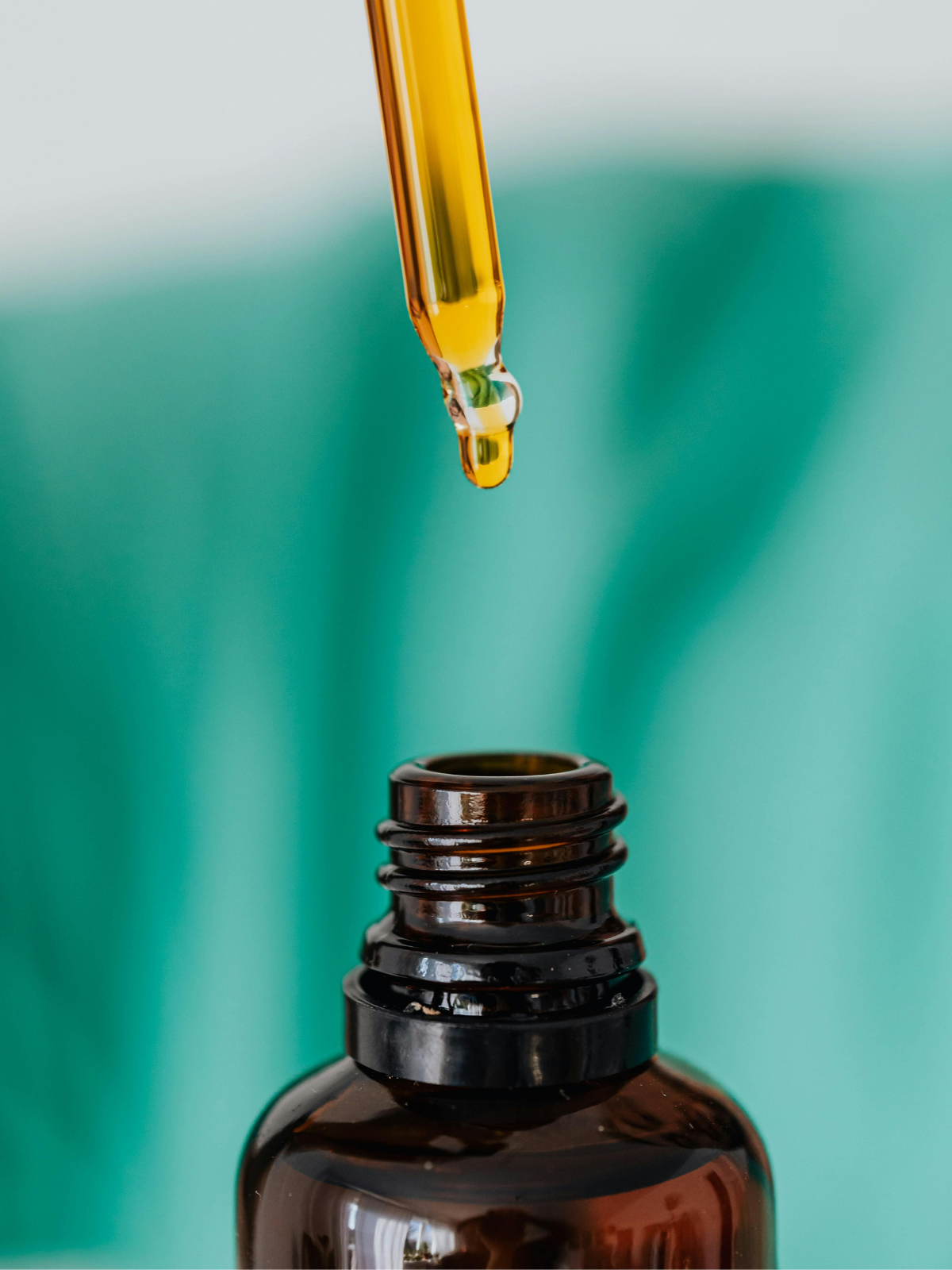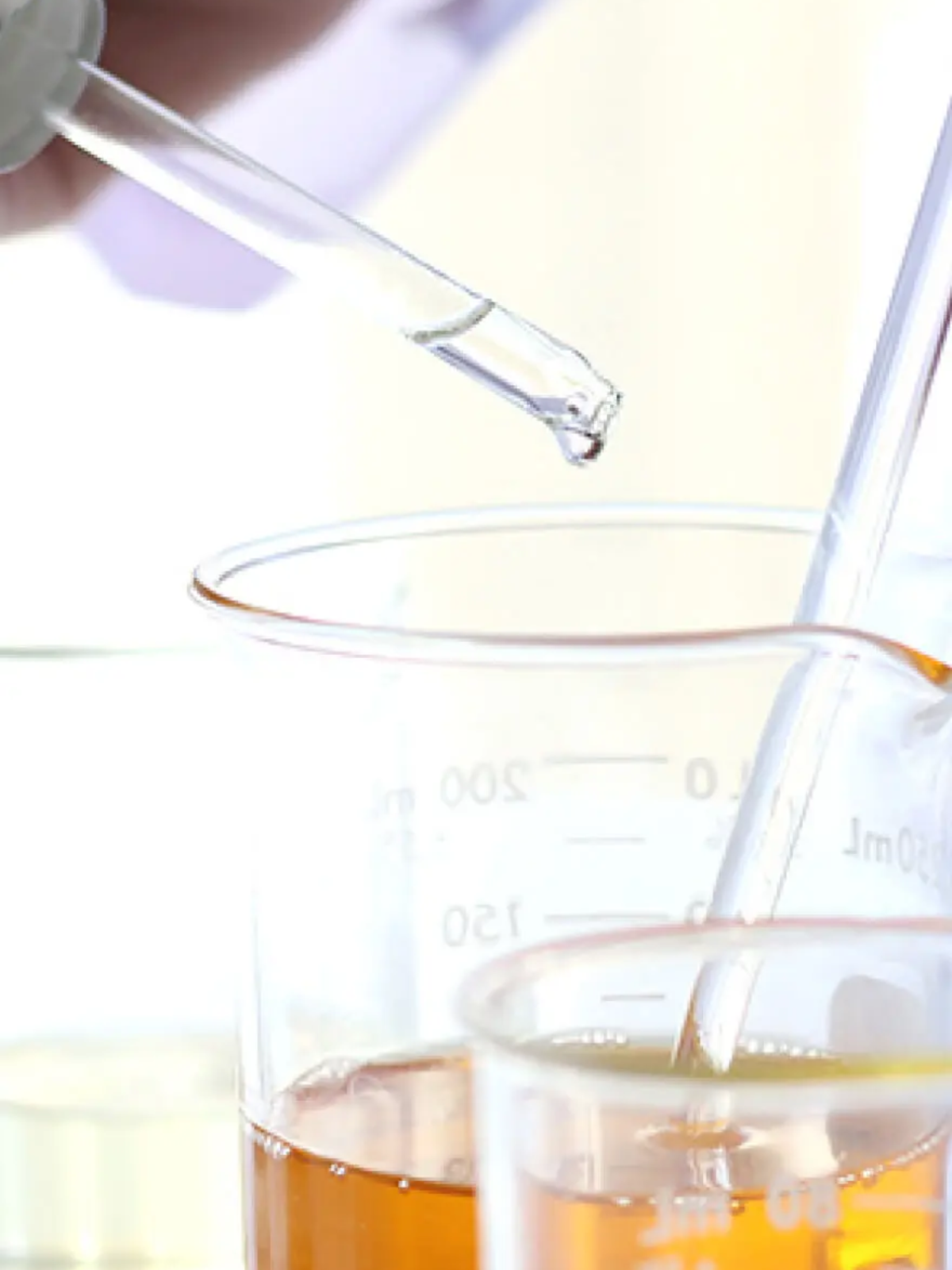Seborrheic dermatitis of the scalp: an imbalance to be treated with precision.

Seborrheic dermatitis is a chronic inflammatory condition that affects the scalp and, in some cases, other areas rich in sebaceous glands (eyebrows, sides of the nose, ear contours). At Möss, we believe that a healthy scalp is the foundation of any effective hair care routine. Understanding seborrheic dermatitis means better supporting it with tailored, specific care that respects the skin's ecosystem.
An interaction between sebum, skin flora and immune response.
Seborrheic dermatitis results from a multifactorial imbalance :
-
Seborrhea , that is, increased production of sebum by the sebaceous glands.
-
An excessive proliferation of lipophilic yeasts of the genus Malassezia , naturally present on the skin.
-
A local inflammatory reaction : in some people, the immune system reacts in an exacerbated manner to the presence of these yeasts or their lipid by-products.
The result: an alteration of the scalp's barrier function, increased flaking (oily, sometimes adherent scales), irritation (redness, itching), and in some cases persistent discomfort.
Factors that aggravate seborrheic dermatitis
Certain conditions promote flare-ups or intensification of symptoms:
-
Oxidative stress and chronic fatigue : they modify the neuro-immune balance of the skin.
-
Wet or cold climate : autumn-winter periods are frequently associated with an upsurge.
-
Unsuitable cosmetics : especially shampoos containing sulfated surfactants, perfumes or alcohol.
-
Irregular hygiene : Accumulated sebum can serve as a nutrient substrate for Malassezia .
A hair routine designed to stabilize without damaging.
The goal is not to permanently eliminate yeast – which is part of the normal flora – but to reduce its excessive proliferation , while strengthening the skin barrier function .
To avoid :
-
Sulfated surfactants : such as sodium laureth sulfate (SLES) or sodium lauryl sulfate (SLS), which are too irritating.
-
Occlusive silicones : These can prevent natural moisture evaporation and worsen microbial imbalances.
-
Synthetic perfumes or poorly dosed essential oils : sometimes sensitizing for an already fragile scalp.
To be favored :
-
Mild antifungal agents : such as zinc PCA , piroctone olamine or Neem extract, which inhibit Malassezia without disturbing the overall skin flora.
-
Soothing active ingredients : such as aloe vera , chamomile , or colloidal oatmeal extract , known to reduce inflammation.
-
Prebiotics : to support a balanced microbiota (e.g. inulin, alpha-glucan oligosaccharide).
-
Non-greasy and rinsable textures : which limit the accumulation of residues and lipid proliferation.
Adapt the frequency and gestures.
-
Wash your scalp regularly : Depending on your hair texture, find the right frequency and specific treatment to limit the accumulation of sebum.
-
Massage gently without scratching : to avoid mechanically altering the skin barrier.
-
Rinse thoroughly : care residues can feed opportunistic flora.
-
Dry without excessive heat : a scalp exposed to high temperatures can see its sebum production increase.
